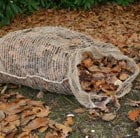Shop
-
Plants
By type
Seasonal plants
-
Bulbs
Bulbs by type
Planting essentials
-
Bedding
Bedding by type
Planting tools
-
Indoor plants
Indoor plants by type
By size
By light
-
Pots
Outdoor pots
By material
By shape
Inspiration
-
Tool shed
Tool shed
Garden equipment
Garden tools
Potting & propagating
Plant protection
Landscaping
-
Outdoor living
Outdoor living
- New this season
- Crocus collection
- Fire pits
- Barbecues & pizza ovens
- Water features
- Picnic & garden games
Accessories
Lighting
Birdcare & wildlife
- Christmas
-
Gifting
Gifts by recipient
By type
By price
-
Offers
Plant offers
Product offers
-
Inspiration
Garden Style Inspiration
-
Advice
Seasonal plant advice
Indoor plant advice




















 Garlic
Garlic Leaf grabber
Leaf grabber Compostable leaf sacks
Compostable leaf sacks







